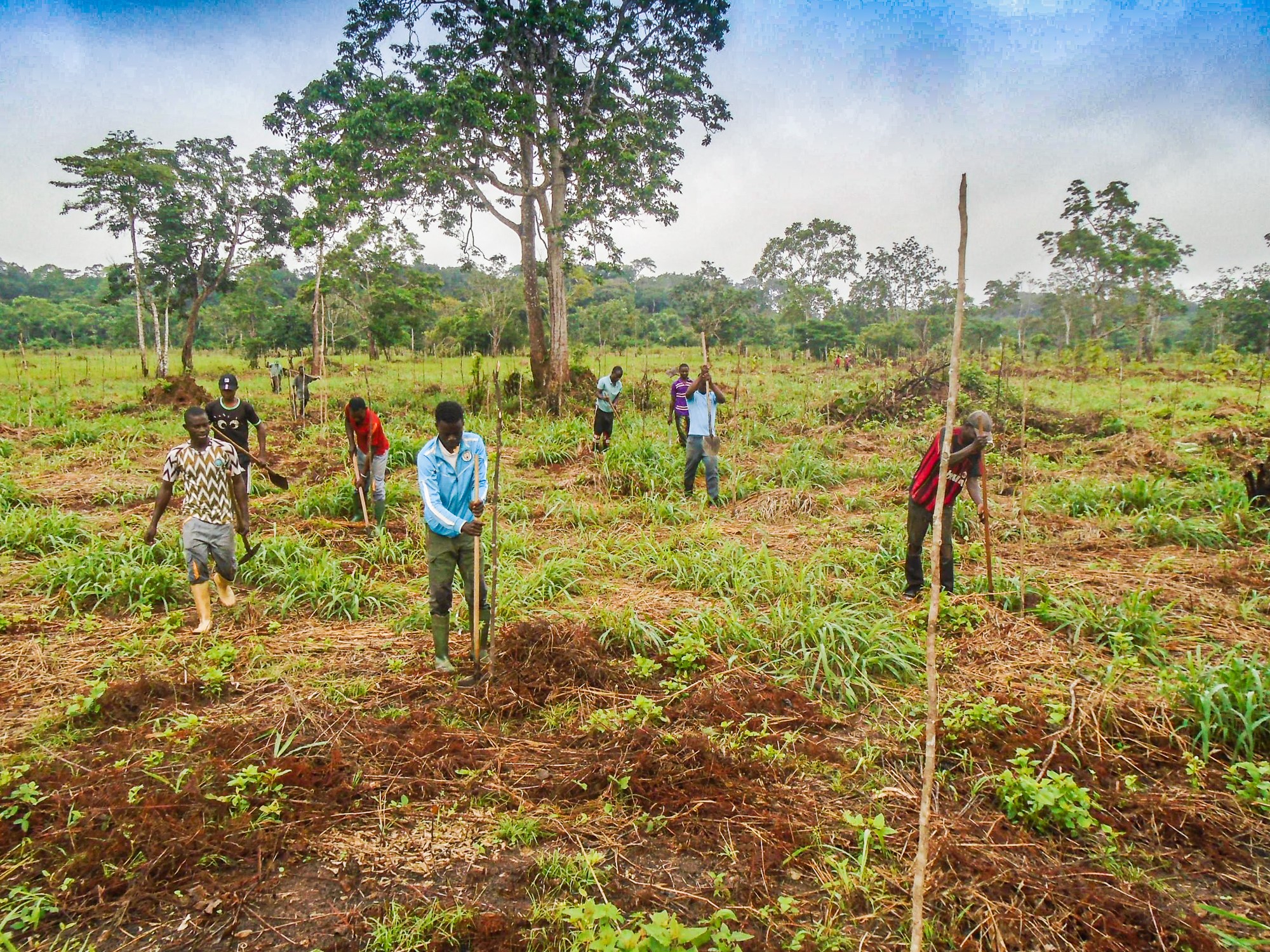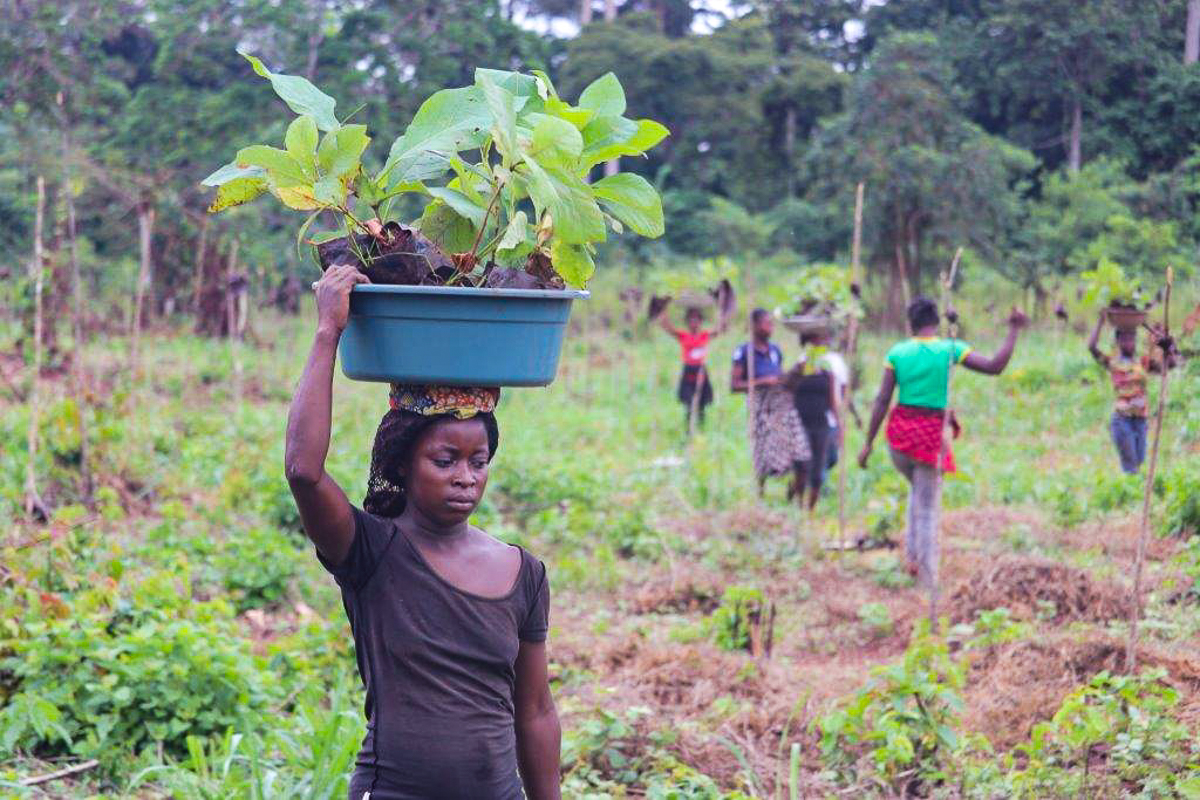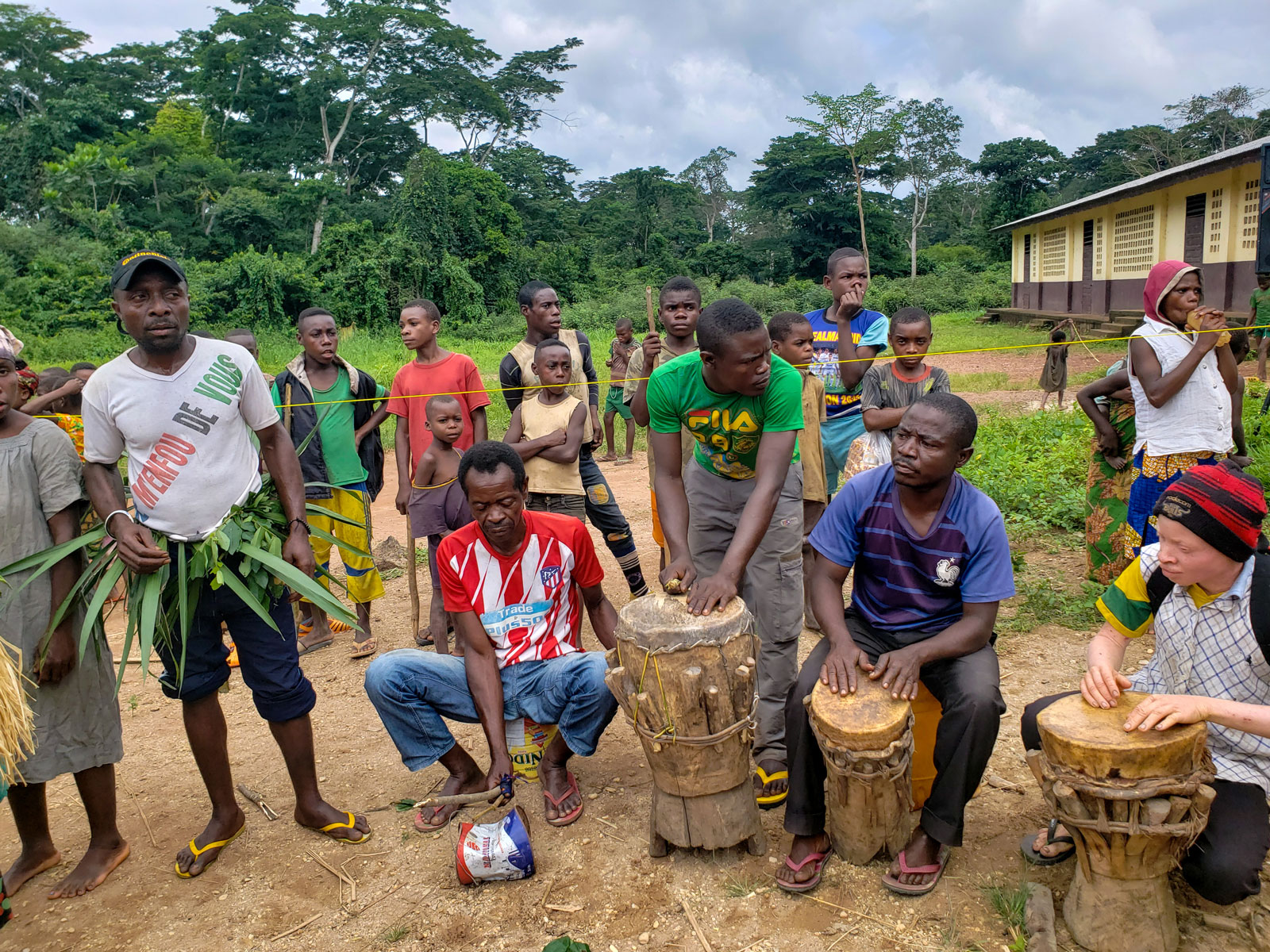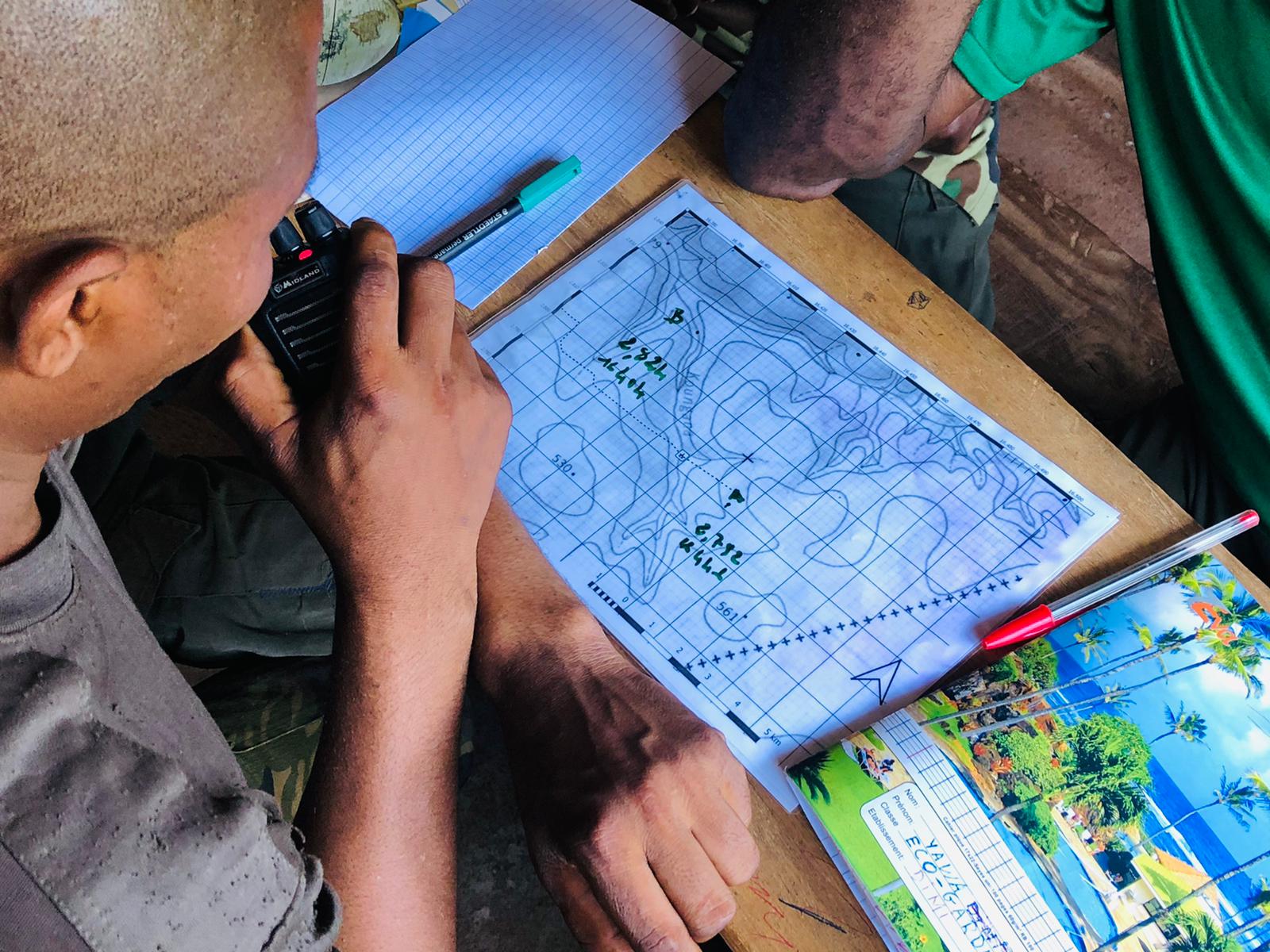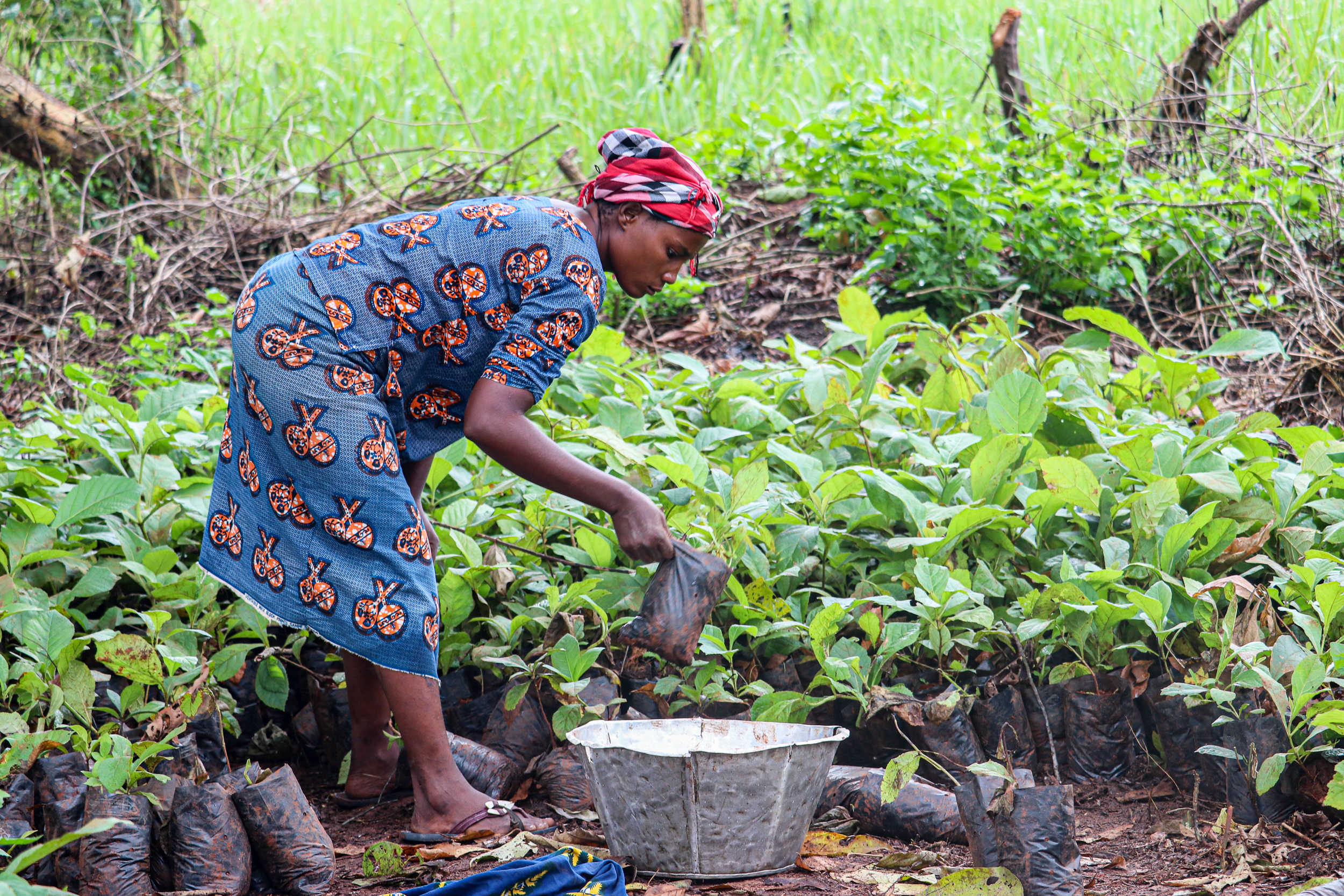
There are 15,000 people living in the Special reserve, many of them are heavily dependent on nature due to the difficult socio-political situation in the country and high poverty.
Within the framework of the project:”Restoration of a degraded landscape within the Dzanga Sangha protected area complex” we therefore aim to restore and reforest degraded areas together with the local population. In September 2020, this has been done near Bayanga, the largest town in the region.
We have used the native species Ricinodendron heudeloti for the reforestation. This tree species is highly appreciated by the local population because of its various benefits. The leaves, bark and roots of the trees have a medicinal effect and the wood is used for furniture and handicrafts. Moreover, the tree provides various sources of food, such as its edible seeds or the caterpillars that can often be found on the tree. Additionally, we plant teak trees, which may be used as building material.
Objectives
In order to permanently protect the national parks in the Special reserve, to contribute to climate change mitigation through reforestation and to use agricultural zones in the reserve in a sustainable manner, our goal is to restore the ecological balance of the degraded area through forest restoration. This will also create food and income sources for the local population and offer a precious local recreation area. With the help of donations, an area of 20 hectares was restored and 8,000 trees planted for the first time in 2020.
This is an additional and important work opportunity for the local population, especially in view of the increase in poverty due to the pandemic.
In a first step, the area to be reforested was “cleared”, i.e. the fallow and degraded area were prepared for subsequent planting. In a second step, with wooden sticks, people made holes in the ground and marked the planting spots. Finally, the seedlings, which were purchased from a nursery in the distant village Nola, were planted by hand.
Thanks to the help of many people, the planting activities were completed before the dry season began. The freshly planted seedlings were thus able to benefit from the last rain of the rainy season. For the long-term success of the reforestation, it will be crucial to assure careful maintenance of the area over the coming weeks and months. The local population involved in the project was sensitised accordingly.

